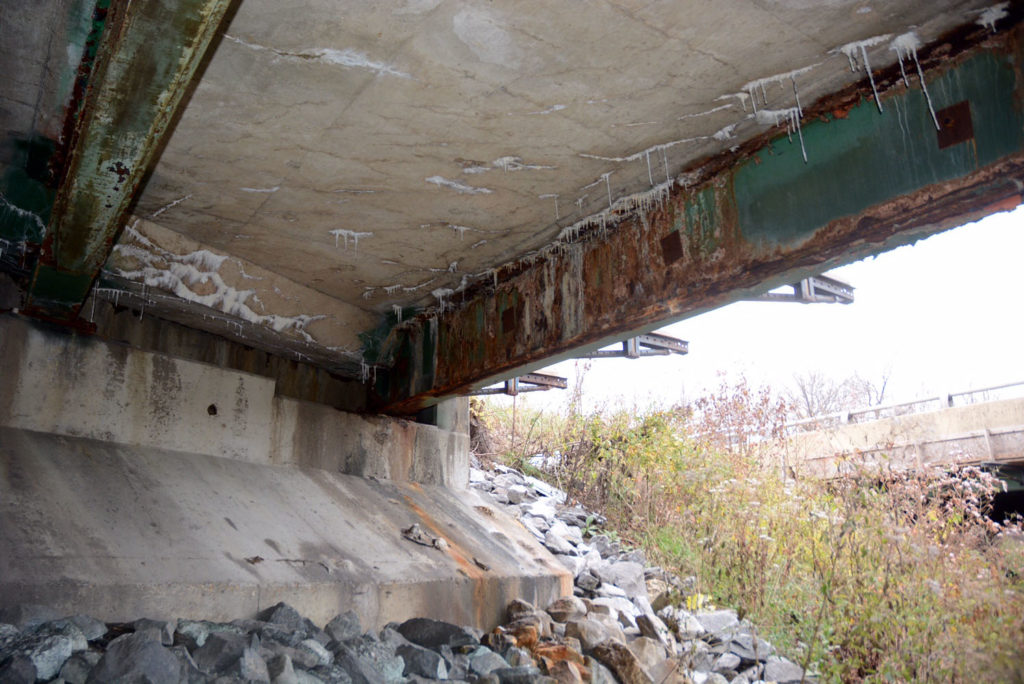President Biden travelled to Pittsburgh last week to push his proposed $1.2 trillion “Build Back Better Act.” In one of the great coincidences in the annals of political strategy, a major bridge collapsed just before his arrival, sending a bus and four cars into the ravine. Fortunately, nobody was killed, unlike the horrific 2007 collapse of the Minneapolis bridge that took down 111 cars, killing thirteen and injuring 145. Biden used the collapse to illustrate the dire need to repair and modernize America’s infrastructure. Perfect timing. Allegheny County, Pennsylvania has 446 bridges, 40 percent of them classified in poor condition. Colorado has well over 100 bridges in similarly poor condition. Biden, calling for passage of his bill, vowed, “I will fix them all.”
He won’t, but not because the problem isn’t real. Crumbling infrastructure is, in fact, one of America’s most deadly serious problems. The American Road and Transportation Builders Association analyzes federal data for an annual report on bridges. The 2019 data showed more than 47,000 bridges in the U.S. in “poor condition and in need of urgent repairs.” The organization estimates that with current funding levels, it will take more than 80 years to fix them all. Those deficient bridges carry roughly 178 million day, so the stakes could hardly be higher. Such a crisis should prompt leaders to pull out all the stops, to make sure the government is doing everything possible, especially funding.

But no. The deteriorating infrastructure problem is serious – the government’s response is not. The first order of business ought to be making sure all the highway money available is being spent on highways, but that has not been the case for decades.
The 1956 Federal-Aid Highway Act created the Interstate Highway system, authorizing $25 billion to finance 90 percent of the cost, with funds disbursed to the states by the new Highway Trust Fund (HTF). The HTF was created only to fund the Interstate Highway system, 90 percent by a federal tax on gasoline (18.4 cents a gallon) and diesel fuel (24.4 cents a gallon), and the rest from taxes on tires, trucks, and trailers. Motorists were promised in 1956 that all proceeds from the new gas taxes would be spent on the interstate system. Characteristically, Congress broke that promise before the ink was dry, adding other “primary and secondary” roads by the 1960s, and more recently virtually all types of roads. In 1982 a portion of the HTF was diverted into a separate account for mass transit, and highway funds have been diverted to purposes other than roads and bridges ever since.
Today, federal highway funds help pay for sidewalks, bike paths, scenic trails, noise barriers, landscaping, parking lots, law enforcement, DUI prevention, grants for anti-racial profiling programs, magnetic levitation trains, and a host of other non-highway projects. It is estimated that at least 25 percent of the gas tax now goes to non-highway uses. By far the main diversion is to rail and public transit.
There are many small bus and transit systems, but almost all the federal subsidies diverted from the HTF go to just six major cities: New York, Chicago, Los Angeles, Boston, Philadelphia, and Washington. And no subway rider in those cities pays a penny into the HTF. Yet drivers in every city, town, county, village, neighborhood, and farm pay into the fund that subsidizes those subway commuters – while worrying about the decay of their roads and bridges. That doesn’t mean mass transit is unimportant; it’s vital to the lives of millions. It just means there should be a dedicated fund – which those commuters support – to pay for it. And that fund should not be the same one needed to fix America’s 47,000 dangerous bridges.
Biden says his $1.2 trillion bill will provide the needed funds, using collapsing bridge imagery to justify it. Yet four-fifths of that money has nothing to do with roads. Housing subsidies get $150 billion; child care subsidies get $200 billion; another $150 billion is for Medicare and Medicaid expansion; $320 billion will provide up to $12,500 in tax credits for consumers buying electric vehicles or solar panels, and there is money for free community college and universal preschool for 3- and 4-year-olds. It is at least arguable that these are worthy causes, but they will do nothing about a crumbling transportation system.
Palpably less meritorious, the bill allocates $85 million to train health professionals to combat, not COVID, but climate change. That tells you how unserious the bill’s “infrastructure” label is.




Comments on this entry are closed.